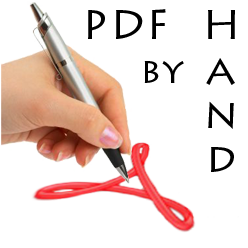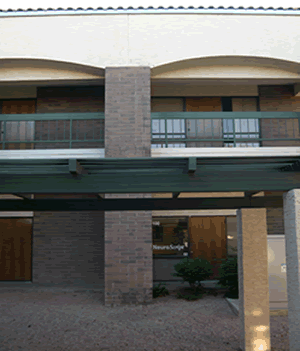|
|
|
Hans-Leo Teulings, Ph.D. Owner and C.E.O. NeuroScript LLC Tempe, AZ 85282 USA Phone #: 480-350-9200 FAX #: 480-350-9199 E-mail: |
Dr. Hans-Leo Teulings received his bachelor's in physics and mathematics in 1973 and his master's in biophysics in 1975 at the University of Nijmegen (Radboud University) in The Netherlands. At the same university, he received his Ph.D. in experimental psychology in 1988 at the Donders Institute for Brain, Cognition and Behavior (previously Nijmegen Institute for Cognition and Information).
From 1975 to 1993, Dr. Teulings pioneered recording and processing of handwriting movements in fine motor control research using pen tablets connected to digital computers. Lacking any software to record pen tablets, developing his own software for everything that was needed was the rule. With his research software development, he helped establish the largest handwriting research group in the world by attracting several national and international projects and visiting researchers. Research involved motor control in children from 5 years to young adults and on automatic recognition of online handwriting. In 1982, he co-organized the very first International Graphonomics Conference, which was held in Nijmegen, The Netherlands.
In 1989, Dr. Teulings was a visiting postdoc at the Motor Control Laboratory of the University of Wisconsin, Madison, USA, where he studied handwriting motor control in Parkinson's disease patients and the elderly. In 1993, he was invited by the Motor Control Laboratory of the Arizona State University, Tempe, AZ, USA, to develop research projects on handwriting movement research in Parkinson's disease patients and the elderly.
In June 1997, Dr. Teulings co-founded NeuroScript, LLC, to develop software and hardware to record, process and analyze fine motor control. Dr. Teulings is currently leading NeuroScript. He has been the Principal Investigator (PI) in more than 10 Small Business and Innovation Research (SBIR) Phase I and II projects, funded by the National Institutes of Health (NIH). He has also contributed to many scientific journal articles on handwriting and drawing.
The creation of computer software that helps uncover and exploit the secrets of fine motor control has become a life-long aim of Dr. Teulings.
Caligiuri, M.P., Teulings, H.L., Dean, C.E., Niculescu, A.B., Lohr, J.B. (2010). Handwriting movement kinematics for quantifying EPS in patients treated with atypical antipsychotics Psychiatry Research, 177, 77-83.
Caligiuri, M.P., Teulings, H.L., Dean, C.E., Niculescu, A.B., Lohr, J.B. (2009). Handwriting movement analyses for monitoring drug-induced motor side effects in schizophrenia patients treated with risperidone. Human Movement Sciences, 28, 633-642.
Saltuklaroglu, T., Teulings, H.L., Robbins, M. (2009). Differential levels of speech and manual dysfluency in adults who stutter during simultaneous drawing and speaking tasks. Human Movement Sciences, 28, 643-654.
Caligiuri MP, Teulings HL, Filoteo JV, Song D, Lohr JB. (2006). Quantitative measurement of handwriting in the assessment of drug-induced parkinsonism. Human Movement Science, 25, 510-522.
Van Gemmert, A.W.A., & Teulings, H.L. (Eds.) (2006). Advances in graphonomics: studies on fine motor control, its development and disorders. Human Movement Science, 25, 447-453.
Van Gemmert, A.W.A., & Teulings, H.L. (Eds.) (2004). Special Issue. Connecting sciences using graphonomic research. Motor Control, 8, 367-370.
Teulings, H.L. & Van Gemmert, A.W.A. (Eds.) (2004). Special Issue. Connecting graphonomic research and pattern recognition. International Journal of Pattern Recognition and Artificial Intelligence, 18, 7, 2004.
Contreras-Vidal, J.L., Teulings, H.L., Stelmach, G.E., & Adler, C.H. (2002). Adaptation to changes in vertical display gain during handwriting in Parkinson's Disease Patients, Elderly and Young Controls. Parkinsonism and Related Disorders, 9, 77-84.
Teulings, H.L., Contreras-Vidal, J.L., Stelmach, G.E., and Adler, C.H. (2002). Adaptation of Handwriting Size under Distorted Visual Feedback in Patients with Parkinson's Disease and Elderly and Young Controls. Journal of Neurology, Neurosurgery, and Psychiatry, 72, 315-324.
Van Gemmert, A.W.A., Teulings, H.L., & Stelmach, G.E. (2001). Parkinsonian patients reduce their stroke size with increased processing demands. Brain and Cognition, 47, 504-512.
Contreras-Vidal, J.L., Van den Heuvel, C.E., Teulings, H.L., & Stelmach, G.E. (1999). Visuomotor adaptation in smokeless tobacco users. Nicotine & Tobacco Research, 1, 219-227.
Van Gemmert, A.W.A., Teulings, H.L., Contreras-Vidal, J.L., Stelmach, G.E. (1999). Parkinson's disease and the control of size and speed in handwriting. Neuropsychologia, 37, 685-694.
Contreras-Vidal, J.L., Teulings, H.L., & Stelmach, G.E. (1998). Elderly subjects are impaired in spatial coordination in fine motor control. Acta Psychologica, 100, 25-35.
Contreras-Vidal, J.L., Poluha, P., Teulings, H.L., & Stelmach, G.E. (1998). Neural dynamics of short and medium-term motor control effects of levodopa therapy in Parkinson's disease. Journal of artificial intelligence in medicine, 13, 57-79.
Poluha, P.C., Teulings, H.L., Brookshire, R.H. (1998). Handwriting and speech changes across the levodopa cycle in Parkinson's disease, Acta Psychologica, 100, 71-84.
Van Gemmert, A.W.A., Teulings, H.L., & Stelmach, G.E. (1998). The influence of mental and motor load on handwriting movements in Parkinsonian patients. Acta Psychologica, 100, 161-175.
Van Den Heuvel, C.E., Van Galen, G.P., Van Gemmert, A.W.A. and H.L. Teulings (1998). Axial pen force increases with processing demands in handwriting. Acta Psychologica, 100, 145-159.
Teulings, H.L., Contreras-Vidal, J.L., Stelmach, G.E., and Adler, C.H. (1997). Parkinsonism reduces coordination of fingers, wrist, and arm in fine motor control. Experimental Neurology, 146, 159-170.
Helsper, E., Teulings, H.L., Karamat, E., & Stelmach, G.E. (1996). Preclinical Parkinson features in optically scanned handwriting. Simner, M., Leedham, G., Thomassen, A. (Eds.). Handwriting and drawing research: Basic and applied issues (pp 241-250). Amsterdam: IOS Press.
Contreras-Vidal, J.L., Teulings, H.L., & Stelmach, G.E. (1996). A neural network model of movement production in Parkinson's disease and Huntington's disease. In J.A. Regia, R.S. Berndt, E. Ruppin (Eds.), Neuronal modeling of brain and cognitive disorders (pp. 377-392). Singapore: World Scientific Publishing.
Teulings, H.L. (1996). Handwriting movement control. In S.W. Keele and H. Heuer (Eds.), Handbook of perception and action. Vol.2: Motor Skills (pp. 561-613). London: Academic Press. ISBN 0-12-516162-X.
Teulings, H.L. (1994). Invariant handwriting features useful in cursive script recognition. In S. Impedovo (Ed.), Fundamentals of handwriting recognition (pp. 178-189). Berlin: Springer.
Helsper E., Schomaker, L.R., & Teulings, H.L. (1993). Tools for Recognition of Handwritten Historical Documents. History and Computing, 5, 88-93.
Teulings, H.L., & Schomaker, L.R.B. (1993). Invariant properties between stroke features in handwriting. Acta Psychologica, 82, 69-88.
Teulings, H.L., & Stelmach, G.E. (1993). Signal-to-noise ratio of handwriting size, force, and time: Cues to early markers of Parkinson's disease? In G.E. Stelmach & V. Hoemberg (Eds.), Sensorimotor impairments in the elderly (pp. 311-328). Dordrecht: Kluwer.
Teulings, H.L., & Stelmach, G.E. (1991). Control of stroke size, peak acceleration, and stroke duration in Parkinsonian handwriting. Human Movement Science, 10, 315-333.
Teulings, H.L., & Stelmach, G.E. (1991). Force amplitude and stroke duration in Parkinsonian handwriting. In J. Requin, & G.E. Stelmach (Eds.), Tutorials in motor neuroscience (pp. 149-160). Dordrecht: Kluwer.
Burton, A.W., Pick, H.L., Holmes, C., & Teulings, H.L. (1990). The independence of horizontal and vertical dimensions in handwriting with and without vision. Acta Psychologica, 75, 201-212.
Teulings, H.L., Schomaker, L.R.B., Gerritsen, J., Drexler, H., & Albers, M. (1990). An on-line handwriting-recognition system based on unreliable modules. In R. Plamondon, & C.G. Leedham (Eds.), Computer processing of handwriting (pp. 167-185). Singapore: World Scientific.
Schomaker, L.R.B., Thomassen, A.J.W.M., & Teulings, H.L. (1989). A computational model of cursive handwriting. In R. Plamondon, C.Y. Suen, & M. Simner (Eds.), Computer recognition and human production of handwriting (pp. 153-177). Singapore: World Scientific.
Teulings, H.L., Thomassen, A.J.W.M., & Maarse, F.J. (1989). A description of handwriting in terms of main axes. In R. Plamondon, C.Y. Suen, & M. Simner (Eds.), Computer recognition and human production of handwriting (pp. 193-211). Singapore: World Scientific.
Stelmach, G.E., & Teulings, H.L. (1987). Temporal and spatial characteristics in repetitive movement. International Journal of Neuroscience, 35, 51-58.
Thomassen, A.J.W.M., & Teulings, H.L. (1985). Time, size, and shape in handwriting: Exploring spatio-temporal relationships at different levels. In J.A. Michon & J.B. Jackson (Eds.), Time, mind, and behavior (pp. 253-263). Heidelberg: Springer.
Stelmach, G.E., Mullins, P.A., & Teulings, H.L. (1984). Motor programming and temporal patterns in handwriting. In J. Gibbon & L. Allan (Eds.), Timing and Time Perception, 423 (pp. 144-157). New York: Annals of the New York Academy of Sciences.
Teulings, H.L., & Maarse, F.J. (1984). Digital recording and processing of handwriting movements. Human Movement Science, 3, 193-217.
Thomassen, A.J.W.M., & Teulings, H.L. (1984). The development of directional preference in writing movements. In W.B Barbe, V.H. Lucas, & T.M. Wasylyk (Eds.), Handwriting: Basic skills for effective communication (pp. 367-376). Columbus, Ohio: Zaner-Bloser.
Calis, G.J.J., Teulings, H.L., & Keuss, P.J.P. (1983). In search of writing and reading habits in the microgenetic phase of letter recognition. Acta Psychologica, 54, 313-326.
Pick, H.L., Jr., & Teulings, H.L. (1983). Geometric transformations of handwriting as a function of instruction and feedback. Acta Psychologica, 54, 327-340.
Soevik, N., & Teulings, H.L. (1983). Real-time feedback of handwriting in a teaching program. Acta Psychologica, 54, 285-291.
Stelmach, G.E., & Teulings, H.L. (1983). Response characteristics of prepared and restructured handwriting. Acta Psychologica, 54, 51-67.
Teulings, H.L., Thomassen, A.J.W.M., & Van Galen, G.P. (1983). Preparation of partly precued handwriting movements: The size of movement units in writing. Acta Psychologica, 54, 165-177.
Thomassen, A.J.W.M., & Teulings, H.L. (1983). Constancy in stationary and progressive handwriting. Acta Psychologica, 54, 179-196.
Thomassen, A.J.W.M., & Teulings, H.L. (1983). The development of handwriting. In M. Martlew (Ed.), The psychology of written language: Developmental and educational perspectives (pp. 179-213). New York: Wiley.
Van Galen, G.P., & Teulings, H.L. (1983). The independent monitoring of form and scale parameters in handwriting. Acta Psychologica, 54, 9-22.
Soevik, N., Arntzen, O., & Teulings, H.L. (1982). Interactions among covert process parameters in handwriting motion and related graphic production. Journal of Human Movement Studies, 8, 103-122.
Teulings, H.L., & Thomassen, A.J.W.M. (1979). Computer-aided analysis of handwriting movements. Visible Language, 13, 218-231.
Thomassen, A.J.W.M., & Teulings, H.L. (1979). The development of directional preference in writing movements. Visible Language, 13, 299-313.
Meijers, L.M.M., Teulings, H.L., & Eijkman, E.G.J. (1976). Model of the electromyographic activity during brief isometric contractions. Biological Cybernetics, 25, 7-16.
























